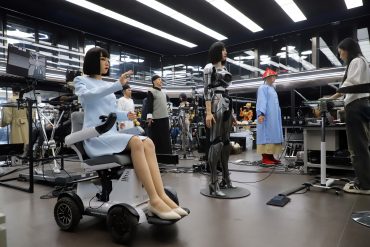
- AI
- AI Transformation
- Tech Layoffs
- Workforce Automation
Tech Layoffs Top 22K as AI Spending Surges Across Industry
5 minute read

Technology companies accelerate AI investments and automation while cutting traditional roles across the software industry
Key Takeaways
- Tech layoffs exceed 22,000 in 2025 as companies prioritize AI automation over workforce retention, with Microsoft and Intel leading large-scale restructuring efforts.
- AI spending grows at 29% annually through 2028 while tech stocks gained 38.1% in 2024, with Palantir Technologies leading at 461.61% one-year returns.
- Commercial office crisis shows signs of recovery after pandemic-driven remote work and high interest rates severely impacted commercial property investors and regional banks.
Introduction
The technology sector continues its dramatic transformation in 2025, driven by aggressive artificial intelligence investments and widespread workforce restructuring. Companies have eliminated over 22,000 positions this year while simultaneously posting robust financial gains and record AI spending commitments.
This apparent contradiction reflects a broader strategic shift toward automation and specialized roles. Major technology firms are abandoning generalist positions in favor of highly technical specialists in AI, cybersecurity, and cloud infrastructure, fundamentally reshaping the industry’s employment landscape.
Key Developments
The layoff trend represents a continuation of workforce reductions that began in 2024, when companies eliminated more than 150,000 positions. Microsoft and Intel have executed particularly significant cuts, citing economic performance pressures and the need for operational restructuring.
Technology companies are simultaneously investing heavily in AI capabilities. Global AI spending is projected to maintain a compound annual growth rate of 29% from 2024 to 2028, reflecting unprecedented capital deployment in machine learning infrastructure and applications.
The hiring pattern has shifted dramatically toward contract-to-hire arrangements and geographic nearshoring, particularly in Latin America. Companies are prioritizing cost efficiency while maintaining access to specialized technical talent in emerging technology areas.

Market Impact
Technology stocks delivered exceptional performance in 2024, gaining 38.1% and maintaining momentum into 2025. The sector remains among the top market performers, driven primarily by AI infrastructure investments and semiconductor demand.
Leading performers include Palantir Technologies with a 461.61% one-year return, followed by MicroStrategy at 174.89% and Shopify at 96.54%. These gains reflect investor enthusiasm for companies positioned at the intersection of AI, data analytics, and digital infrastructure.
Global IT spending is projected to grow 9.3% in 2025, with double-digit expansion forecast for data center and software segments. The semiconductor sector is recovering from oversupply issues, supported by anticipated AI-driven hardware upgrade cycles across device categories.
Strategic Insights
The industry’s transformation reveals a fundamental shift toward premium specialization over broad-based employment. Companies are commanding higher salaries for technical roles while eliminating traditional support and junior positions through automation.
Major technology firms including Nvidia, Apple, Alphabet, Tesla, Meta, Microsoft, and Amazon maintain competitive advantages through scale, capital access, and AI expertise. Their continued market dominance suggests that resource concentration is accelerating rather than diminishing.
The commercial office sector crisis, exacerbated by pandemic-driven remote work adoption, is showing signs of stabilization. According to The Economist, aggressive interest rate hikes beginning in 2022 substantially increased mortgage refinancing costs, particularly impacting smaller banks with commercial property exposure.
Expert Opinions and Data
Industry analysts express cautious optimism about 2025 prospects, viewing the year as pivotal for AI commercialization despite high capital requirements and execution risks. The consensus suggests continued sector growth as interest rates moderate and capital becomes more accessible.
However, experts warn of a potentially “bumpy road ahead” as not all AI innovations may deliver expected returns. The social implications of automation-driven workforce displacement remain a significant concern for policymakers and business leaders.
Market observers note that while AI-linked semiconductor stocks like Nvidia have outperformed, broader chip industry recovery depends on sustained demand across device categories. The anticipated product upgrade cycle could lift previously lagging semiconductor segments.
Conclusion
The technology sector in 2025 demonstrates remarkable financial resilience alongside significant workforce disruption. Companies are successfully balancing aggressive cost reduction with substantial AI investments, creating value for shareholders while fundamentally altering employment patterns.
The industry’s trajectory reflects broader economic forces including automation adoption, capital market dynamics, and evolving workplace structures. Technology firms are positioning themselves for long-term competitiveness through strategic workforce optimization and innovation investment, even as they navigate the immediate challenges of delivering returns on unprecedented AI spending commitments.








